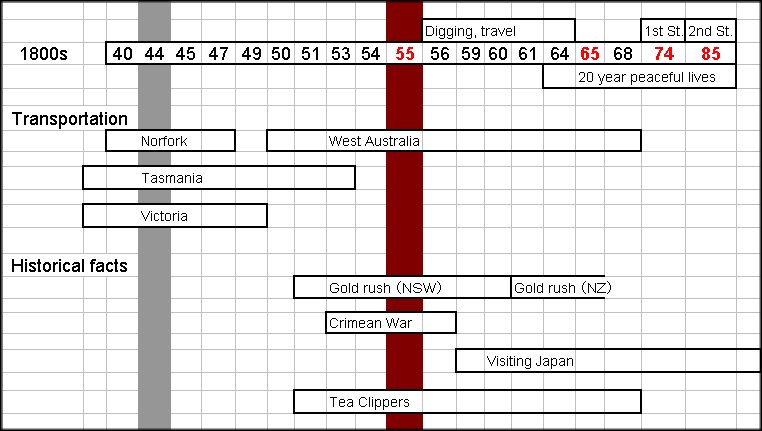

| year | Armitage/Trevor Senior | Trevor Junior |
| 1832 | born |
|
| 1851 - | knowing about tea clippers |
|
| 1854 | born | |
| 1855 | 23 years old, aboard the Gloria Scott |
|
| 1856 - | digging gold |
|
| until 1864 | traveling and coming home |
|
| 1864 - 65 | 32 - 33 years old, married |
10 years old |
| 1874 | 42 years old, meeting Holmes | 20 years old |
| 1885 | 53 years old, dead | 31 years old, going to Terai |
| 1887 - 88 | One winter's night, Holmes told Watson according Baring-Gould | |
